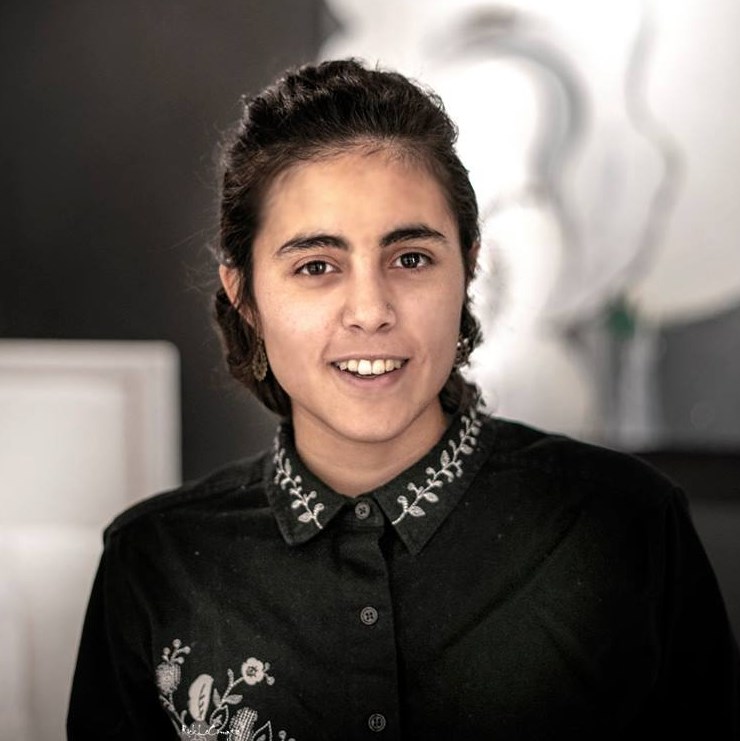Bio.
Samantha Kasubaski Rosado is a Puerto Rican, cis-gendered, gay woman who works primarily with collage and oil paint on canvas. Though she was drawn to the arts in her youth, she began oil painting a year after graduating from Mount Holyoke College in 2015. In 2016, Kasubaski Rosado attended a Puerto Rican tiple-making workshop at Trinity College where she was later awarded a 2016-2018 Hilla Rebay Post-Baccalaureate Fellowship in Fine Art and Studio Art. At Trinity College, Kasubaski Rosado decided to become a painter. She found interest in the challenge of color, space development, and compositional relationships. She carried these interests into her assistantship at Arrowmont School of Arts and Crafts, and while completing her MFA at Louisiana State University. Pursuing her MFA inspired a passion for cultural storytelling in the arts using the figure and animals. After graduation, Kasubaski Rosado moved with her wife, corgi, and kitty to Charlotte, NC. From 2021-2023, she was a member of the Studio Artist Program at the McColl Center. In 2022, Kasubaski Rosado completed an Artist Residency at Anderson Ranch in Snowmass Village, CO, had her first post-MFA solo show at TFA Gallery and completed a mural for the City of Charlotte. During her first year of adjunct teaching at Winthrop University, she was awarded 2022-2023 Best First-Year Adjunct in the College of Fine Art and Design. She now serves as full-time faculty in Visual Arts at Central Piedmont Community College. Samantha Kasubaski Rosado is a painter, poet, and storyteller. She uses humor in her work to create captivating imagery and rhythm to guide the viewer through stories and dreamscapes derived from directional lines, figures, and color.
Artist Statement.
My work is about identity, family culture, body image, and relationships. Storytelling is my motivation. Though the subject matter demands careful consideration, I create imagery using comic relief. I attempt to create honest descriptions of the intersections of sexuality and religion, children and parents, siblings and in-laws, and Puerto Rican-American culture. I use animals, characters, and symbols to create a visual hierarchy. Perspective is given through the eyes of the central figure(s). My partner and our animals dominate the picture plane, creating dynamic shapes and patterns. Painted figures lock eyes with onlooking viewers, pulling them into staged dreamscapes filled with color and repeated forms. Viewers gain understanding while reconsidering their own circumstances.
While painting, I stage photographs, sketch, and create digital collages (using manipulated photos, drawn elements, and at times elements from different stages of the paintings) to develop composition, color, and light. These collages are edited further to develop content and visual aesthetics. Getting into character is an important part of my process, therefore, I pose as the main characters and photograph myself in position to further understand form and light. Conversations with peers, storytelling, and sitting with the work independently allow me to investigate, revise, and redirect. Content often shifts throughout my paintings as I reflect on current events that bring depth or new meaning into the developing narrative scene. Humor and play on varying realities are recurring themes in my development as a painter. Subject matter and characters are used as motifs emblematic of an inner critic, culturally inherent shame, familial judgment, and a longing for mental freedom. A combination of English, Spanish, and Spanglish slang in the titles of the work gives the viewer context of location and culture. My intent is for the audience to feel represented, gain understanding, and/or find humor in given circumstances.
